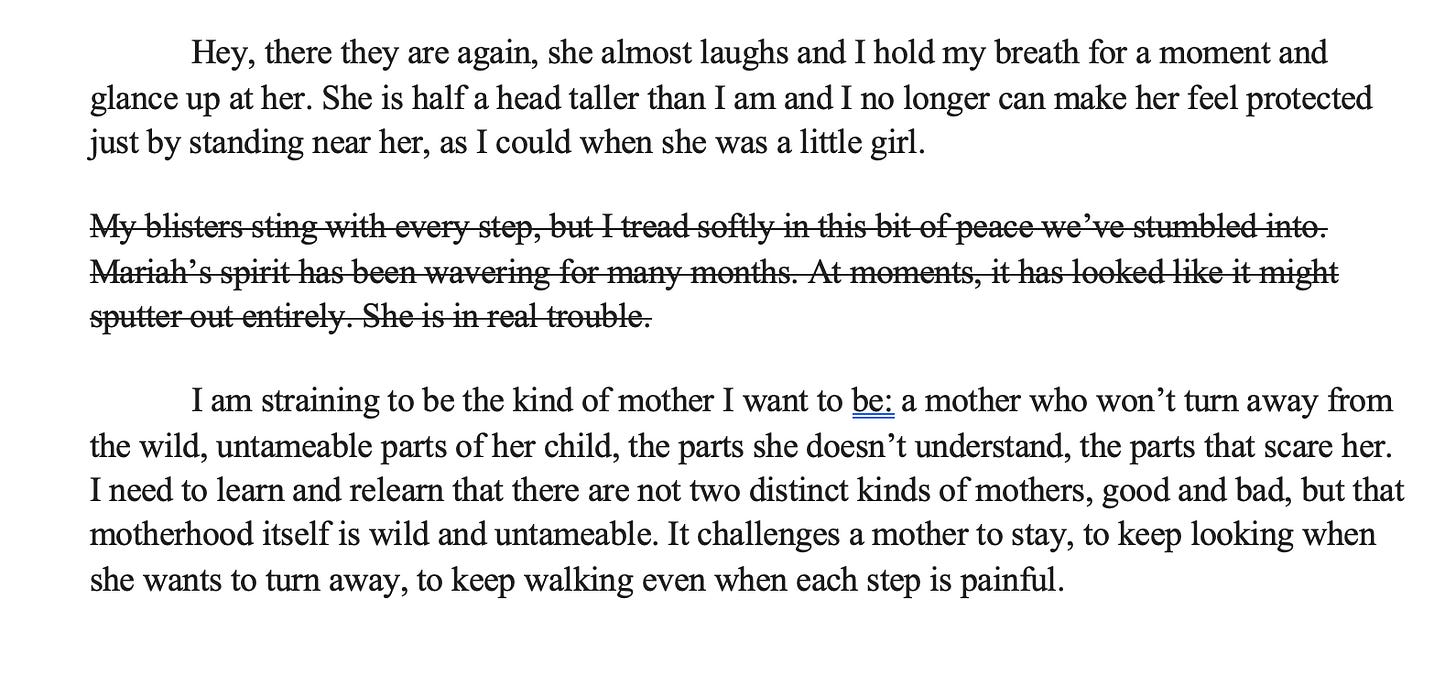We’re going to start this week’s paid post off with a beautiful submission that came in from a subscriber named Sarah. This opening page is from her memoir (which I don’t have the title of) that she describes as a work-in-progress. Let’s read it together.
Page 1-2 of Sarah’s memoir:
What’s working:
So many things! Sarah’s beginning blesses us readers with the gift of knowing exactly where we are in space and time: we’re in California during a “historic” drought, and the narrator is walking along a dry Sonoma County creek with her 15 year-old daughter Mariah. So often, writers think that “good” or “literary writing” means not giving the reader logistical information up front; that it is somehow an amateur move to announce a character’s name, or their age, or to identify the town or state the story’s starting in. Let this skillful opening prove those writers wrong! I always tell students that it’s not just comforting but respectful to start a story off with these kinds of details. After all, you’d be unlikely to get in a vehicle for a six-hour car ride with someone whose only identifier was “human.” It is a journey to read a book. It is a six-hour car ride. We need to know something about the driver we’re being asked to trust.
The beauty of the blisters. I’m just cheering for these blisters that Sarah’s shared with us. Reader, do you see how much they’re doing for story’s set-up? Here we have a mother who is so cautious and thoughtful that she bought—and dons—shoes to protect her feet from rocks, but they’re not working. As a mother myself, this calls up all things I’ve bought in the past to protect my daughter from one thing or another (floaties, car seats, no-spill sip cups), when the reality is, of course, I can’t perfectly protect her from anything at all.
Egg shell atmosphere: Everything in this opening is on the brink of a disaster. The mother’s blisters are about to pop, the daughter’s mood will shift, the earth is going to crack. Sarah is using the natural environment so well here to support the fissures in her own life and in her relationship with her daughter. It’s just beautifully done.
What could be working better:
Keep showing, don’t tell! There is one place in this opening where Sarah stops trusting her storytelling abilities. Did you spot it?
Sarah has already established that the peaceful moment she’s enjoying with her daughter is a tenuous one. It’s tenuous for the blisters, which could burst at any moment, and it’s tenuous because we understand that Mariah’s winds will shift. Mariah’s volatility has already been established. We don’t need to be told she is in trouble because we feel she is from the first paragraph, where Sarah built up tension. We don’t need it spelled out.
This opening is a prologue: This is where this Substack post is going to change tack. The opening to this memoir— the entirety of which you just read— is a prologue. I kept this information from you because I wanted you to admire it for everything it’s doing well. It just so happens that prologues are a trend that I would like to see fall out of fashion. I’m going to explain why I feel this way, before returning to Sarah’s beautiful story. So follow me on this tangent, if you will.






